Paul Yan is a music producer, recording and mixing engineer and iPhone photographer who was born and raised in Taiwan but now lives and works in Beijing, China.
His work has been featured many times in the weekly Mobiography showcases as well as in the Mobiography magazine. It is a mixture of black and white street photography, low light and abstract work. After so many appearances on Mobiography, I thought it was about time I caught up with him to ask about his iPhone photography, his influences and approach to the photos he takes.
How were you first introduced to iPhone photography?
I received an iPhone 3GS as a gift from one of my music production clients in early 2010. Although its camera quality was a notch above that of the Nokia N70 I had been using, I wasn’t really impressed and only used it as a tool to make quick snapshots of scenes of interest or to document the settings on the recording gear in the studio like mic pre-amps, compressors and EQs just in case someone else inadvertently messed them up. My Nikon P5100 digital point-and-shoot was used for more “photographic” purposes. It was in the summer of 2014 that I started to take more pictures with the 3GS to share with my friends on Facebook which I had just signed up in late March.
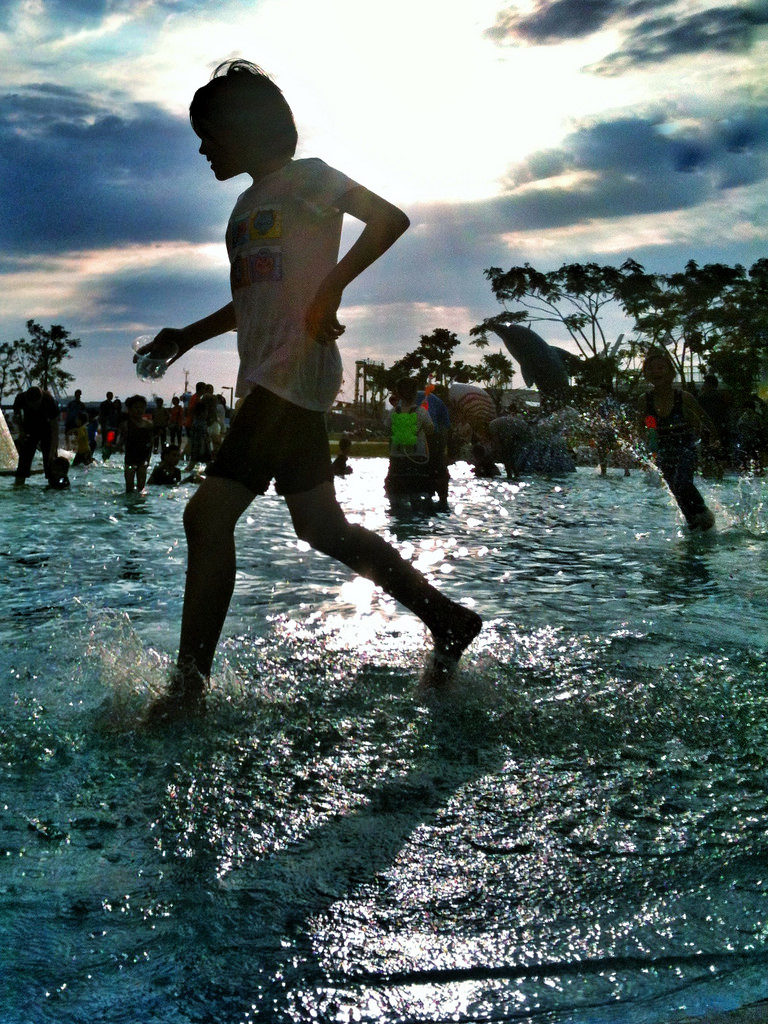
Summer Fun by Paul Yan
It was in April of 2015 that I upgraded to the iPhone 6 Plus mainly for its 5.5” screen size because my presbyopia was giving me a hard time in reading texts on the 3GS. I was pleasantly surprised to find the 6 Plus’ native camera quality pretty decent. Although the Nikon P5100 was always in my shoulder bag, I found myself making more and more photos with the 6 Plus. The only exceptions were occasions where I needed to zoom in for distant subject matters with the Nikon. I wasn’t even aware that there were such things as “photo-editing apps”, and did all the adjustments with the basic editing tools in the phone’s camera roll until I “discovered” the Snapseed app in late August of 2015 along with camera apps like ProCamera and Camera+. It was a joyous revelation and my little iPhone photography volcano has been boiling and erupting ever since!
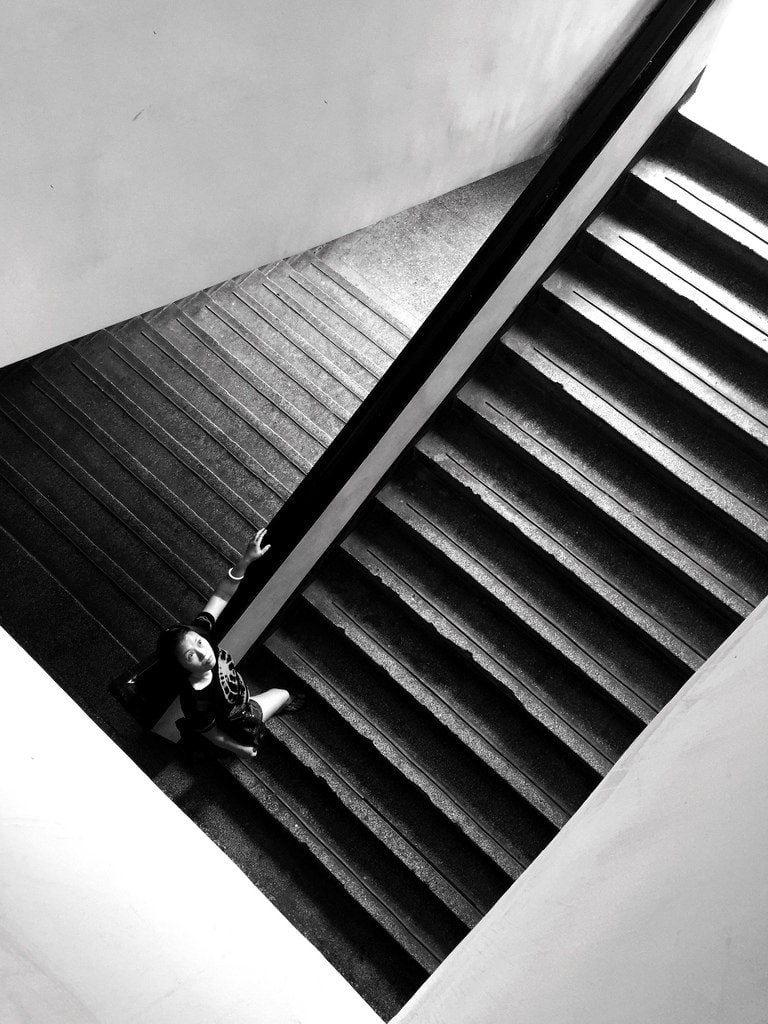
Ascent to Luminescence
How would you describe your style and how has it evolved over time?
To be honest with you, I don’t even know if I have a so-called “style”, and can’t therefore describe it. One common thing I can kinda feel among my photographic work is that there seems to be actions going on in most of the photos I make, and that viewers can often come up with their own stories and interpretations when viewing them.
I also like to have the human element in the frame, be it recognizable people, silhouettes, or shadows, although there’s a small portion of my work that doesn’t include the human form at all. Sometimes I encounter a scene that attracts me but can’t find a human being around to be my model, I just set up my phone on a stable surface or a tripod, use a Bluetooth remote or the self-timer to trigger the shutter and let myself into the frame to be a part of the composition.
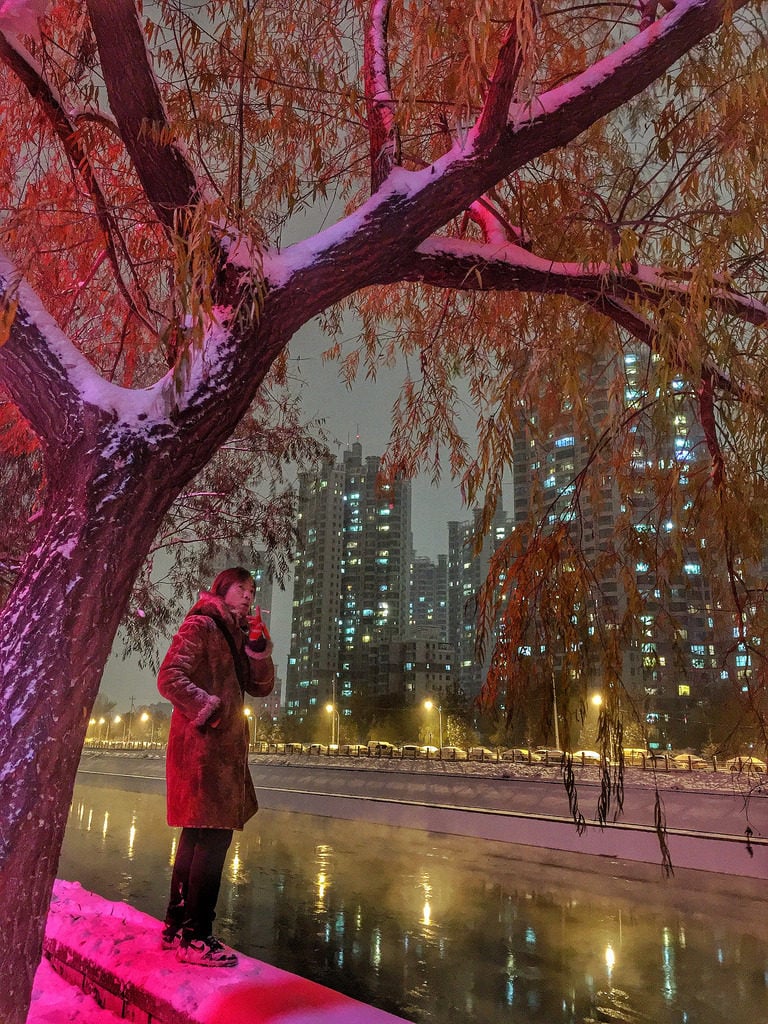
Nothing Lasts Forever
As for the evolution of my “style” over time, I find that I’ve become more and more patient and willing to spend more time working the scene. Upon seeing a certain scene or subject matter that intrigues me is encountered, I would manually set up the ISO, shutter speed, white balance, focus-lock, compose and wait for something interesting to happen, like pleasing lighting conditions, or for someone to walk into the “snare” – a specific spot in the frame.
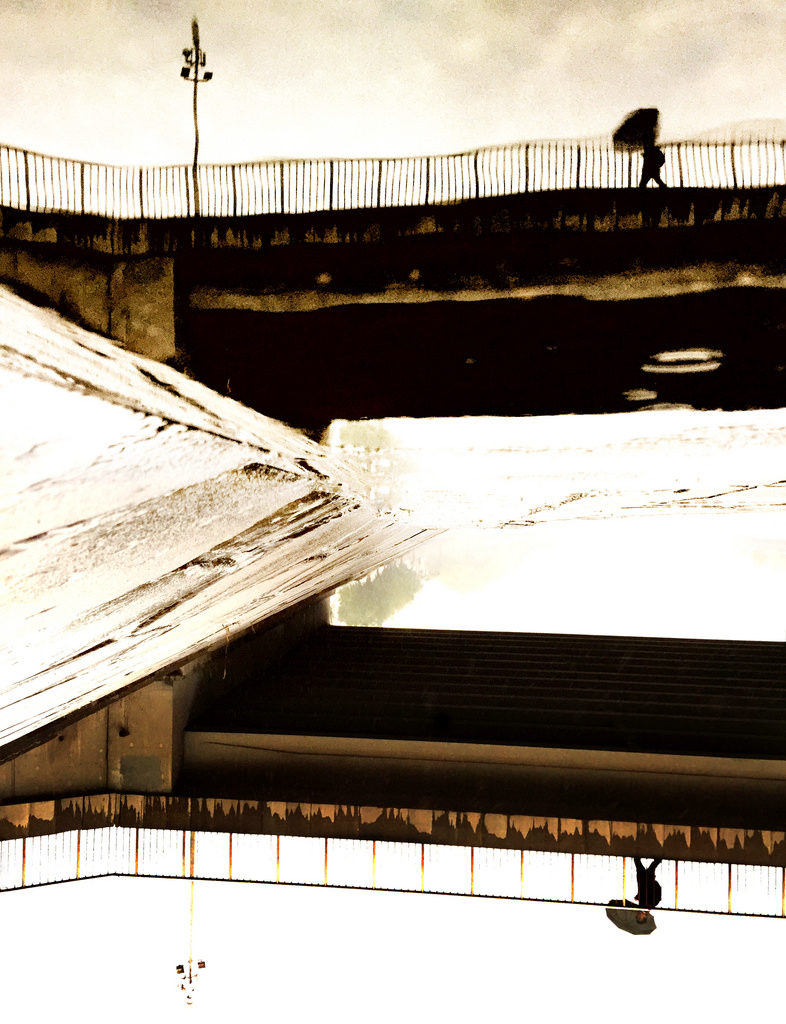
No Parole on the Double Planet
How do you approach your street photography and the images you capture?
Most of the time, it’s the backgrounds that inspire me to whip out my phone to compose, and then wait for a suitable subject, mostly human of course, to get into the frame. Sometimes it’s interesting people that grab my attention first, then I try to come up with a composition that compliments the human subject matter. I tend to avoid shooting from standing eye-level because photos made from that angle look the least appealing to my eyes. I find a great portion of my work was shot from a very low angle, with the edge of my phone practically touching the ground. I sometimes joke that a little puppy’s or kitty’s view of the world must be way more fascinating than that of us humans, haha!
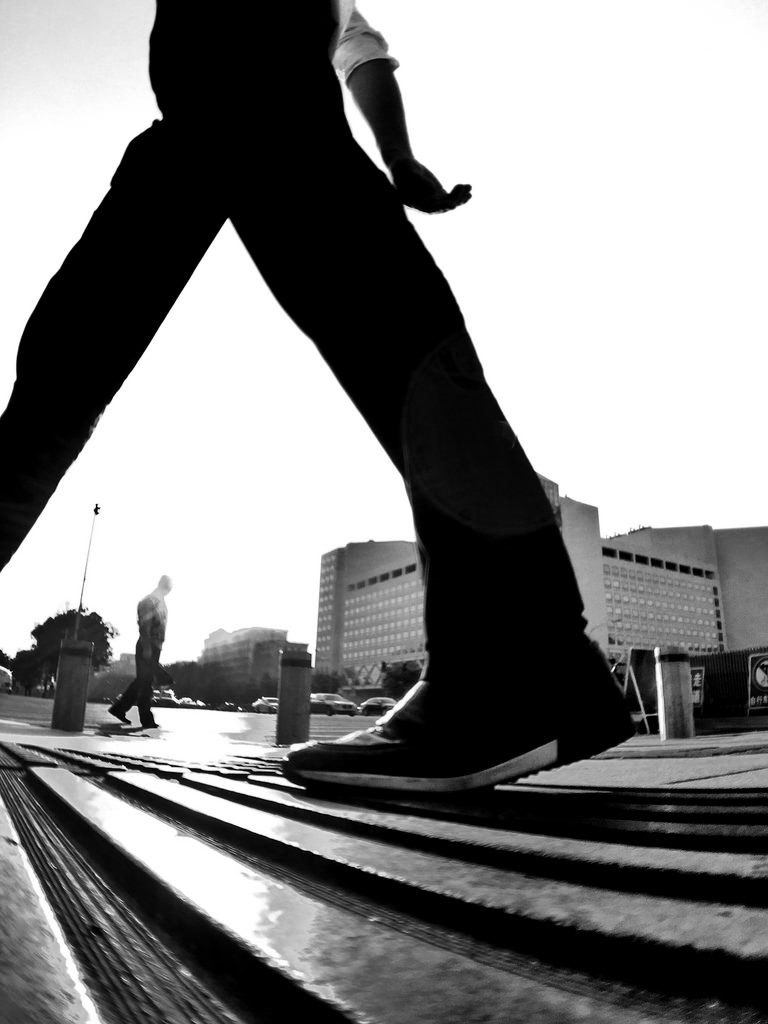
Tread the Path
The iPhone earbuds cable’s volume +/- buttons are quite an integral tool for me. I rarely fire the shots by pressing the shutter button on the screen but with my lips lightly pinching one of the cable’s buttons instead. A lot of my street photographs are shot this way with the phone far away from eye-level and me not looking straight on at the screen. It makes the act of shooting less obtrusive to people so more candid moments can be captured. Street photography “purists” may object to such a way of shooting or “shooting from the hip”, saying it’s a cowardly approach, but seriously, who cares? A good photograph is a good photograph no matter how you make it!
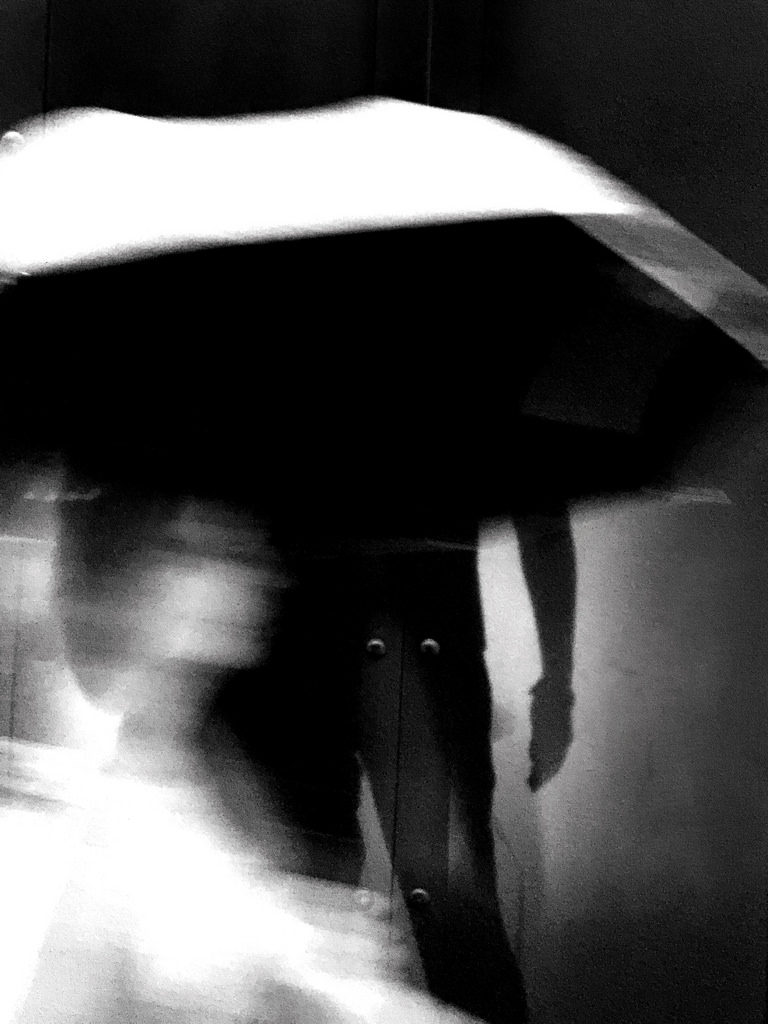
Emotions in Motion
With that being said, I sometimes approach my human subject matters and ask for permission to photograph them. Once I get their OK, I’d either direct them a little or just say, “Please keep on doing what you were doing”, and try to shoot several frames from different angles.
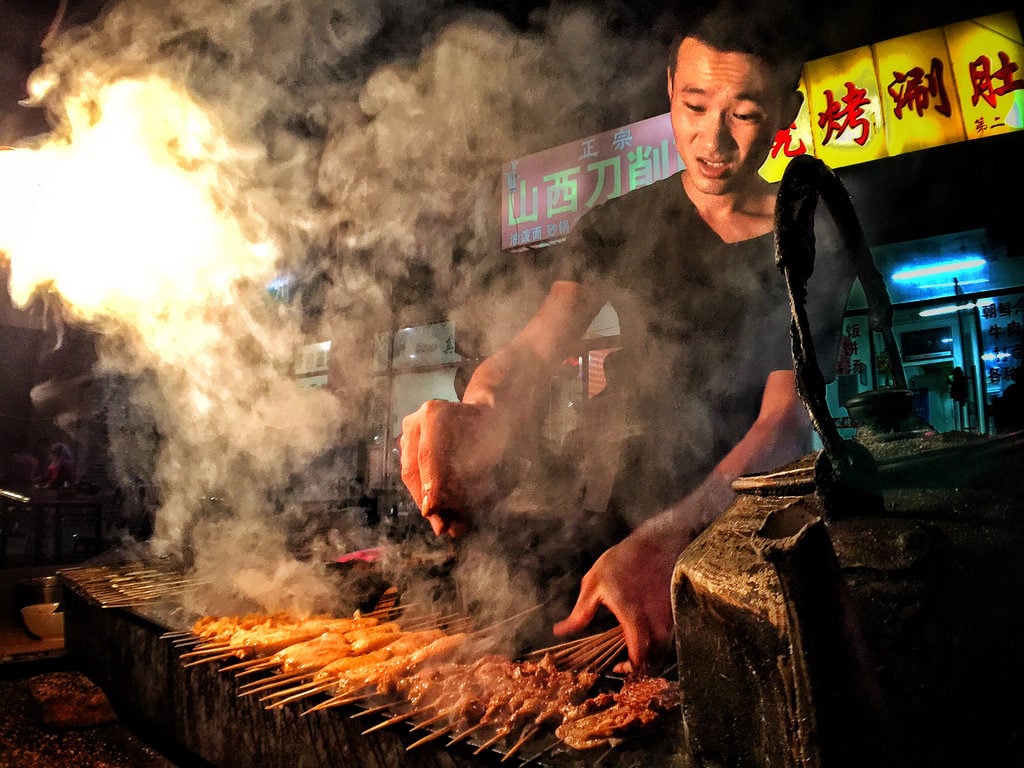
Smoke on the Cluster
What apps do you use and is there a process or methodology that you apply to your post production editing?
I mainly shoot with the ProCamera app in full manual mode, keeping the ISO at 32 as much as I can. Its HDR feature is occasionally employed if there is too much contrast in the scene with nothing moving in it. Since the last software update of the Camera+ app that introduces sensitivity down to 0.01 ISO and shutter speed up to 30 seconds in full manual mode, I’ve shot a bit more with it in low light situations. Sometimes I use the Slow Shutter Cam if light trails or intentional motion blur is what I’m after. With all these 3 camera apps, I’ve set them up to store the photographs in Tiff format in order to preserve as much data as possible.
My process of editing is quite simple: First, clarity is set to between 0 and 30, depending on how much detail and definition is desired, in Camera+. Everything else is then done in Snapseed: [Healing] to remove unsightly or distracting little debris; [Tune Image] to mainly modify the overall ambience, highlights and shadows (very rarely do I increase contrast in editing) and saturation; [Brush] for areas whose exposure or temperature needs to be altered; [Selective] to tweak certain colours; [Black and White] with one of the colour filters involved if the image is stronger in monochrome. The [Grunge], [Vintage], [Grainy Film] and [Frames] filters are never used because they look pretentious to me. But that is just me, and I’ll never stop anyone from using them.
Being someone working in the field of music production, I like to analogize photography with music production: planning, composing and taking the photograph is like the songwriting, arranging and recording process, while editing is like the mixing stage where every sound is fine-tuned and coordinated to make the whole song compelling and exciting. It doesn’t necessarily mean heavy processing to the degree of deception or fakeness, but to pleasingly present the beauty in reality. As they say in the music industry, “Shit in, shit out. All the best audio gear, producers and mixing engineers cannot save a badly written song.” It’s the same thing in photography: you gotta make a good photograph to start with and to benefit from all the editing techniques known to man.
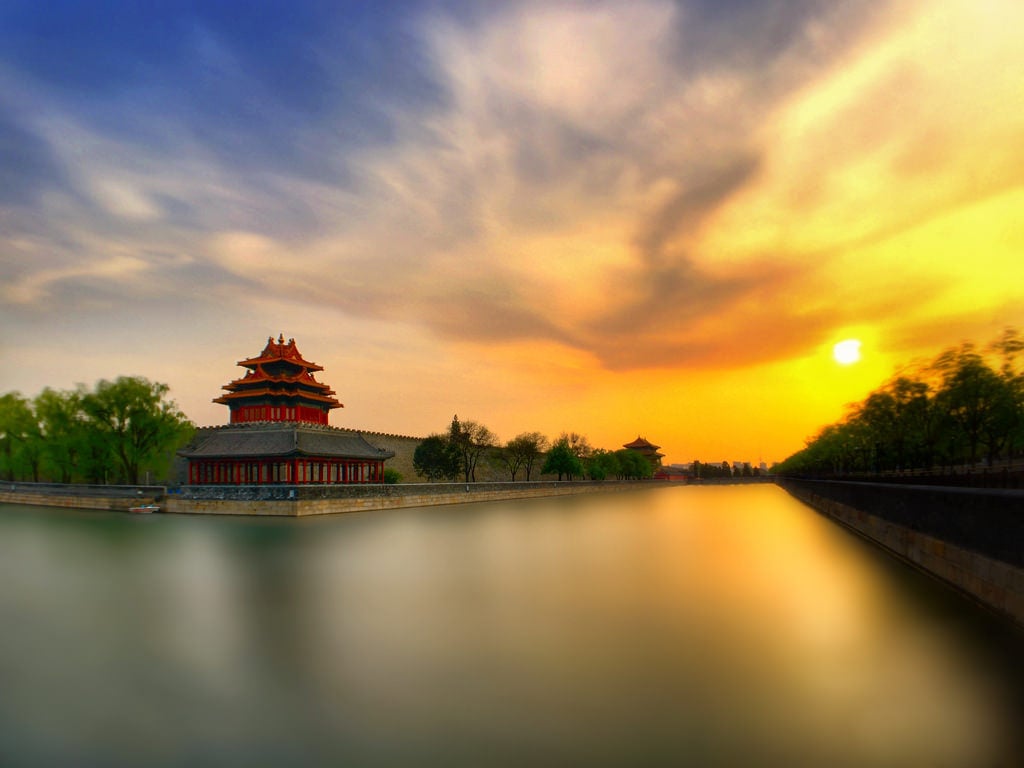
All Along the Watchtower (A Corner of the Forbidden City)
How do you find shooting with your iPhone compared to your DSLR cameras? Do you prefer one over the other?
Aside from the fact that I used to shoot with an old all-manual Nikon FM SLR and a P5100 point-and-shooter, I’ve never owned a digital SLR so I can’t really make a comparison between an iPhone and a DSLR. However, I do know that aspects of dynamic range, definition, sharpness and the fixed wide-open aperture of any newest generation mobile phones are still quite inferior to those of the average DSLRs and mirror-less digital cameras. Anyone who proclaims that “nowadays, image quality of mobile phones are as good as DSLRs” is fooling himself and others. However, one focuses on interesting composition, storytelling and creativity to balance out the shortcomings of the camera-phone.
We’ve all seen awe-inspiring photographs made with both stand-alone cameras and mobile phones by respected photographers, and really pixel-wasting pictures with both by people who think better cameras/phones can take better pictures for them. So I don’t really have a preference for one over the other. The matter is really not the gear, but the vision of the person making the photographs. I’m not saying my vision is any better than anyone else, but I do strive to make the most out of the humble camera that is always with me… the iPhone.
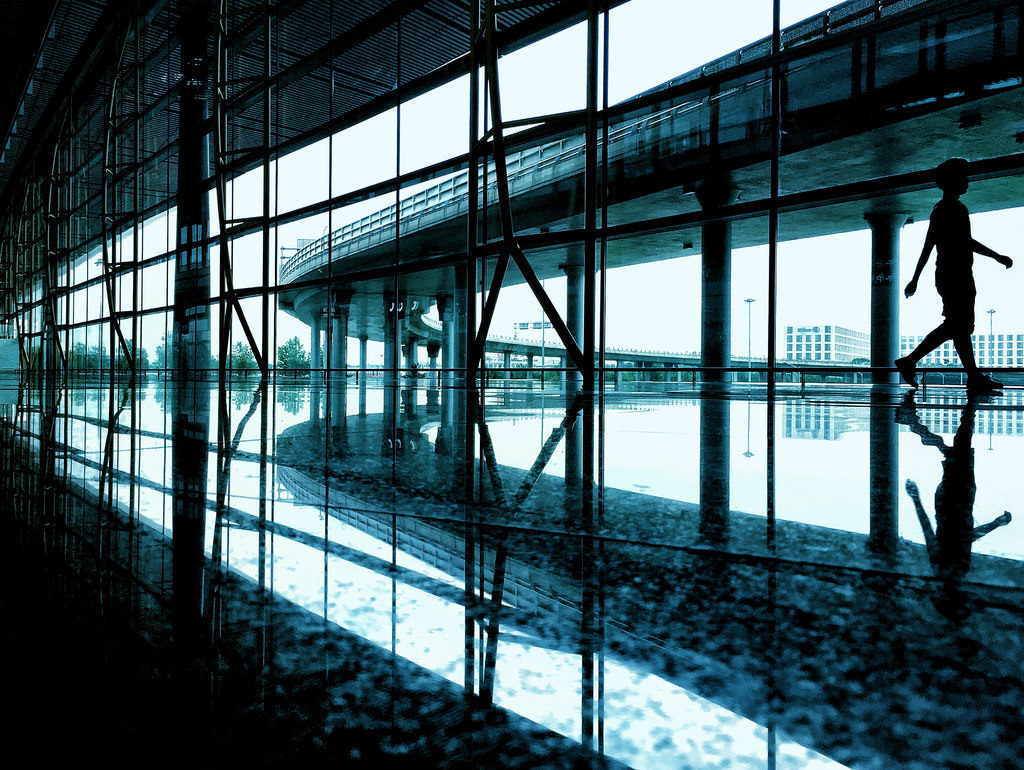
Nothing to grasp, nothing to be attached to
Are there any photographers that have been a big influence or inspiration to you?
I’ve been visually inspired by the work of painters such as Marc Chagall, Pablo Picasso, Gustav Klimt, Salvador Dali, Claude Monet, Henri Matisse, Vincent van Gogh, Henri Rousseau, Joan Miró and Roger Dean, etc.; and photographers such as Henri Cartier-Bresson, Fan Ho, Eugene Atget, Jim Marshall, Man Ray, Edward Steichen, Michael Kenna, Jeanloup Sieff, Annie Leibovitz, Mick Rock, Richard Avedon, Albert Watson, Storm Thorgerson, Steve McCurry, Mark Seliger, Linda McCartney, Anton Corbijn, Howard Schaff, Bill Brandt, Gordon Parks, Jan Saudek, Jack Mitchel, David LaChapelle and Ralph Gibson, etc..
A lot of music album covers are great inspirations to me as well, including the Beatles “Revolver” and “Abbey Road”, Yes’ “Fragile”, Pink Floyd’s “Wish You Were Here” and “The Dark Side of the Moon”, King Crimson’s “In the Court of the Crimson King”, Led Zeppelin’s “Led Zeppelin” and “Houses of the Holy”, The Rolling Stones’ “Sticky Fingers”, The Doors’ “Morrison Hotel”, Rush’ “Moving Pictures” and “Signal”, Patti Smith’s “Horses”, Van Halen’s “Women and Children First” and “1984”, Meatloaf’s “Bat Out of Hell”, and Peter Gabriel’s first and second solo albums, etc..
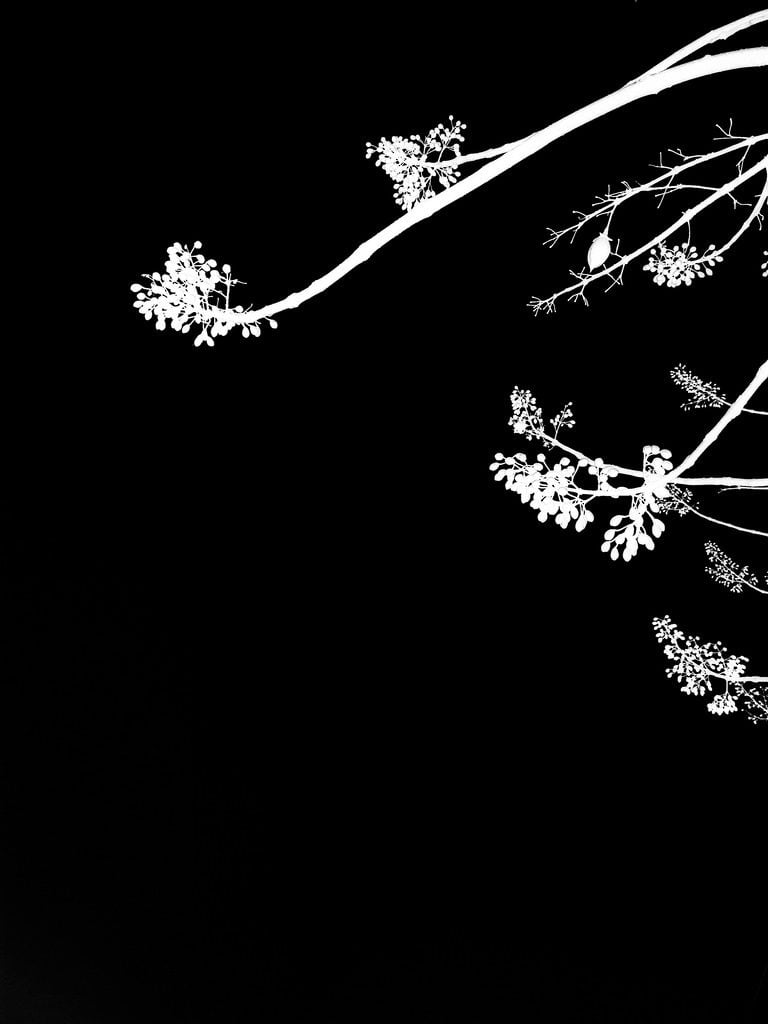
The Dream is Over
What would be your top tips or words of wisdom for aspiring mobile photographers or artists?
I humbly don’t think I’m qualified to provide any “words of wisdom” to my fellow mobile photographers or artists. However, I’d like to remind our friends that the iPhone’s volume +/- buttons on the earphone cable really make an excellent remote shutter release that helps reduce camera vibration entailed by pressing the on-screen shutter release button, hand-held or on a tripod. You can still hold your phone with both hands if you let your lips lightly hold the buttons and press them when the time for releasing the shutter comes. I don’t know if phones by other manufacturers provide such a feature. It’s too bad if they don’t!
You may have found by now that I like to stick to very low ISO sensitivity. I must confess that I haven’t been a fan of noise and grain, and the noise that comes with an ISO above 160 in my iPhone 6 Plus is already ear-bleedingly loud for my eyes, especially after increasing clarity, ambience, details or sharpening in the editing stage. So I encourage people to purchase camera apps like ProCamera and Camera+ which allows the user to operate in full-manual or ISO priority mode so that you can set your ISO to the lowest usable sensitivity in order to avoid excessive noise.
When it comes to the matter of being creative, of having a unique aesthetic, and improving our photography, I’d like to suggest our fellow mobile photographers to not only look at and study photography but to absorb all things in art like paintings, sculpture, dance, literature and music because they all infuse us with feelings and inspirations.
Last but not least, I’d like to share a maxim once uttered by a master photographer: “If you want to make interesting photographs, be an interesting person first!” I’m not saying I’m any more interesting than anybody else, haha! Let us all strive to be genuine and interesting persons!
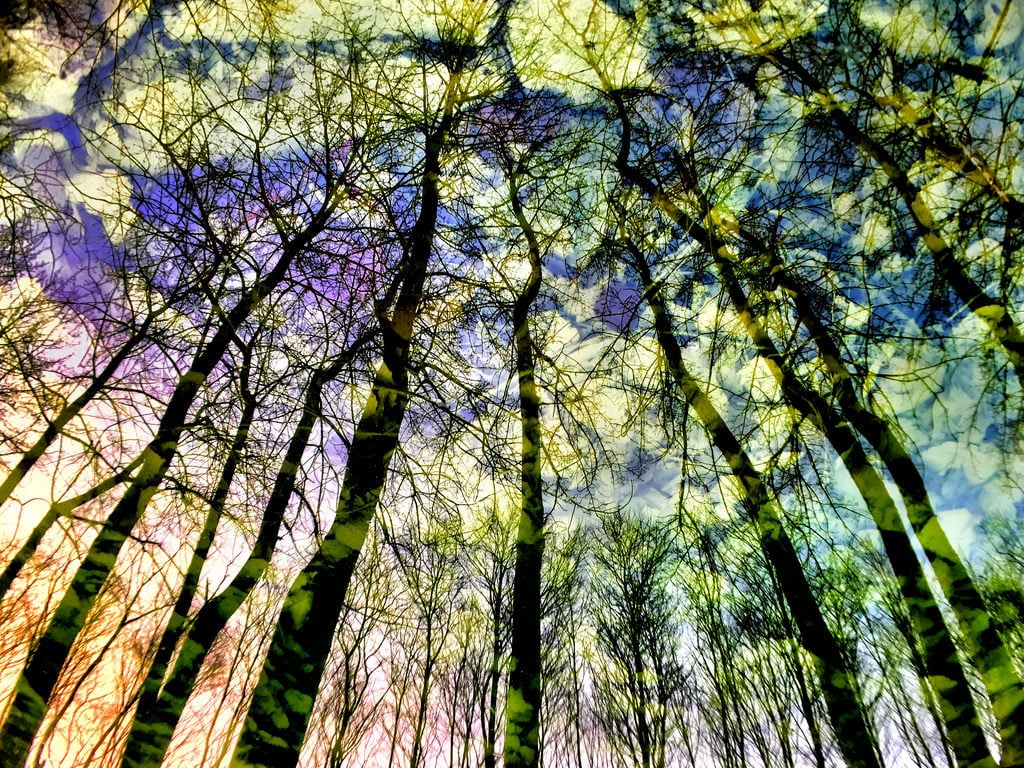
Where Dreams and Reality Intertwine
Tell us about a few of your favourite photos and the story behind them?
Kaly?na-Mitra – Lesson from a Tree
This tree, among others, has always been erect on the bank across the small river close to where I live, and which I can see from my balcony everyday. It changes from being leafy to bare and the cycle goes on through all the seasons. It has become one of my friends in nature and has been a living example reminding me the lesson of impermanence and equanimity in all conditions. It’s my “Bodhi Tree” if you like. One day, I decided to have a photo made of us two together, so I got my tripod out and set up the Bluetooth remote…
Up is the Way!
I was wandering around a bus station one afternoon when I hit this spot under an overpass where a triangle was formed by the columns and the edge of the overpass. Without hesitation, I switched on the camera app in my iPhone, focused on the stairway, carefully composed in a way that the top tip of the triangle touched the top edge of the frame, and waited for my prey to get on the stairway.
Universal Fountain of Love
This photo was made at the fountain in the frontal plaza of the Hyatt Hotel, Beijing which was pretty close to the Royal Palace/Forbidden City/Tian-An-Men Square. The fountain is lit from inside the rim in the evening around which people like to take selfies or pictures of their family and friends. The girl in the frame had just finished posing for her friend’s smartphone standing on the rim of the fountain and was bowing down to pick up her purse, getting ready to leave. By that moment, I had already screwed on the Manfrotto KLYP+ wide angle add-on lens to my iPhone, and manually set the focus and dialed in the shutter speed, ISO value and white balance in the ProCamera app. The Snapseed app was then used to enhance the highlights and darken the shadow areas even more, and to render the photo black-and-white.
Let us all be ever-luminous fountains of love and compassion!
Crossfire in the Jungle
This image was taken at a crossroad in Beijing where cars honk their horns relentlessly at everything in front of them, right at the instant when the traffic lights go green. Life in the urban jungle isn’t so easy for a lady, especially when you’re threatened by carnivores on wheels that don’t know pedestrians are to be respected.
Headlights On!
This self-portrait was made during a work break in the studio where I was mixing a song. The bulb tree lamp had been on top of the audio equipment rack since day one of the studio’s operation. I thought I could take advantage of it, so I had my iPhone on a tripod with the earphone cable’s volume buttons as shutter release. I fastened my LED torch to a music stand and put it about 2.5 meters, at 40 degrees angle in front of my left cheek. Lights out and voila! Selfies done with the phone’s front lens are not my cup of tea…they denote narcissism, egocentricity, selfishness and attachment to one’s own form, in my very humble opinion. Well planned-out self-portraits that convey a certain feeling or idea, on the other hand, are a healthy medium for creativity and artistic expression.

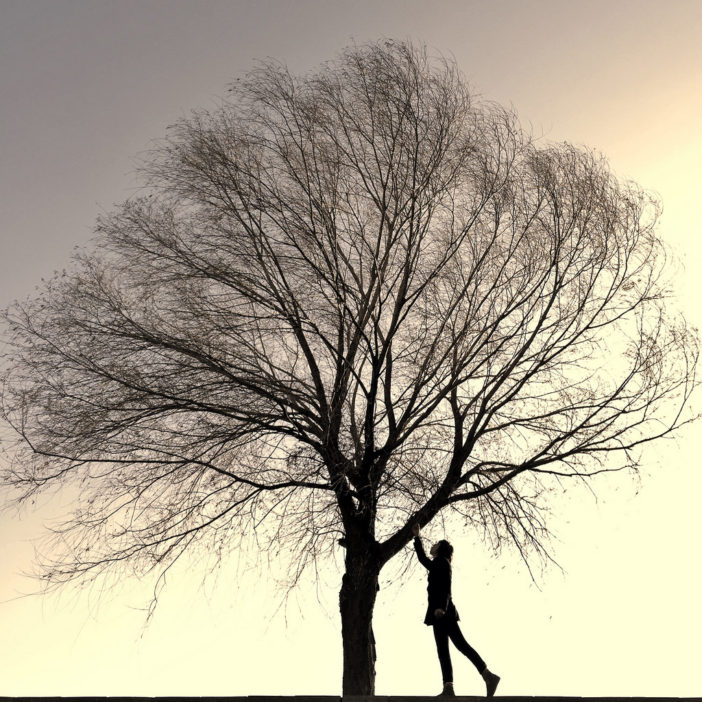
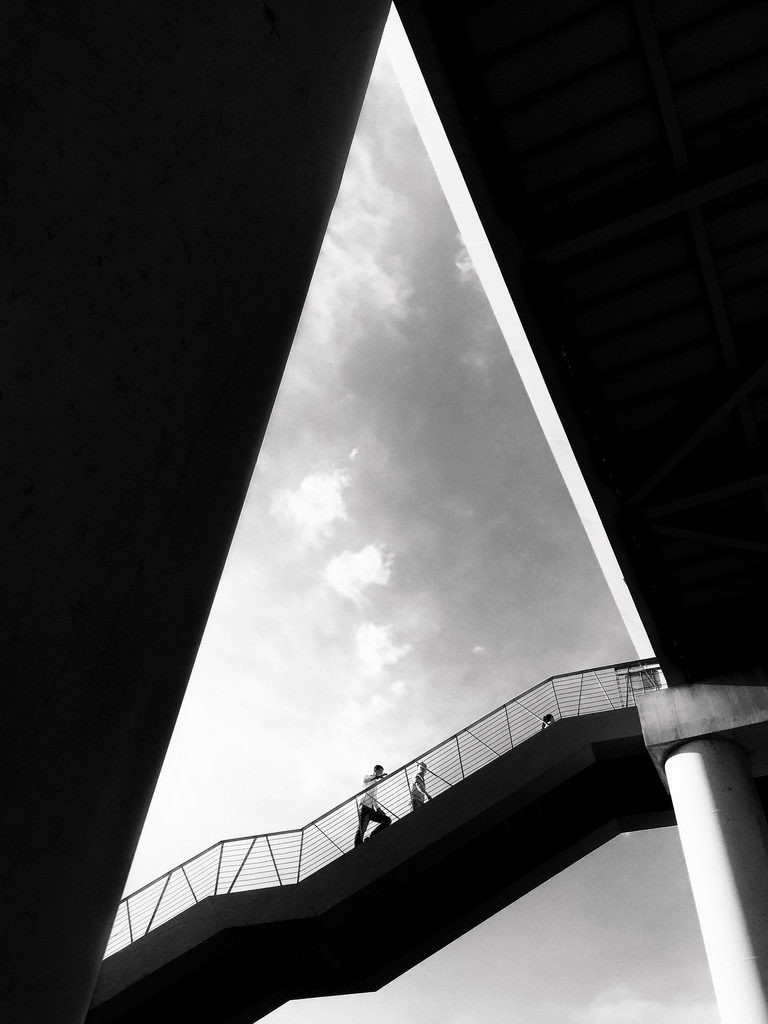
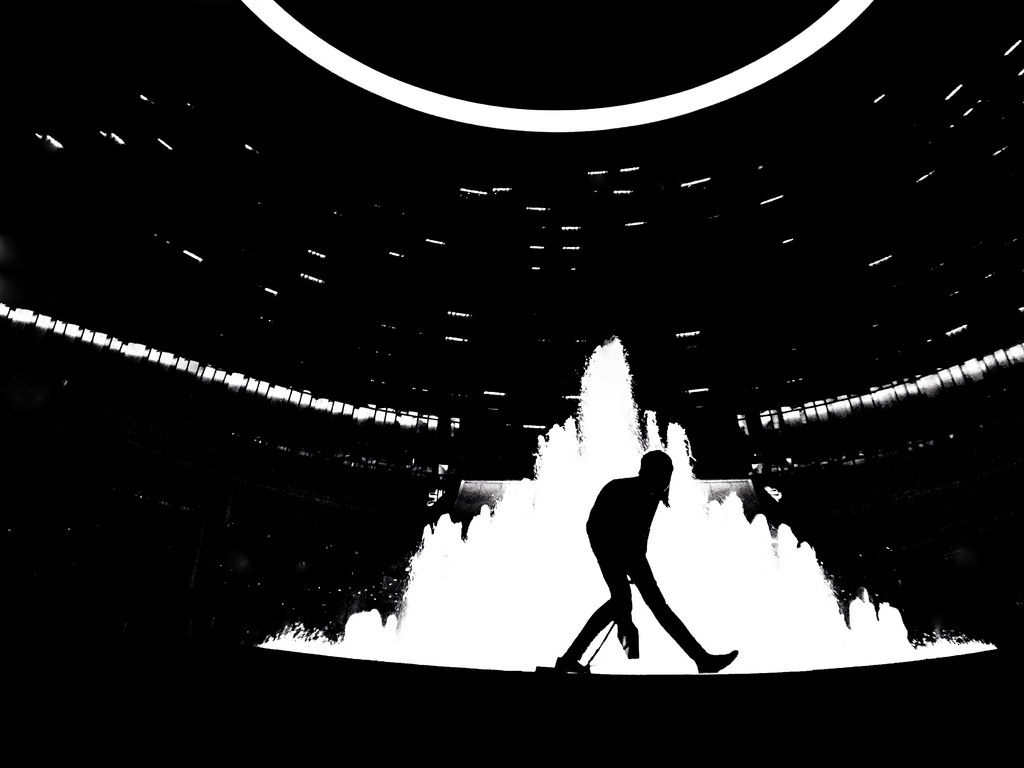
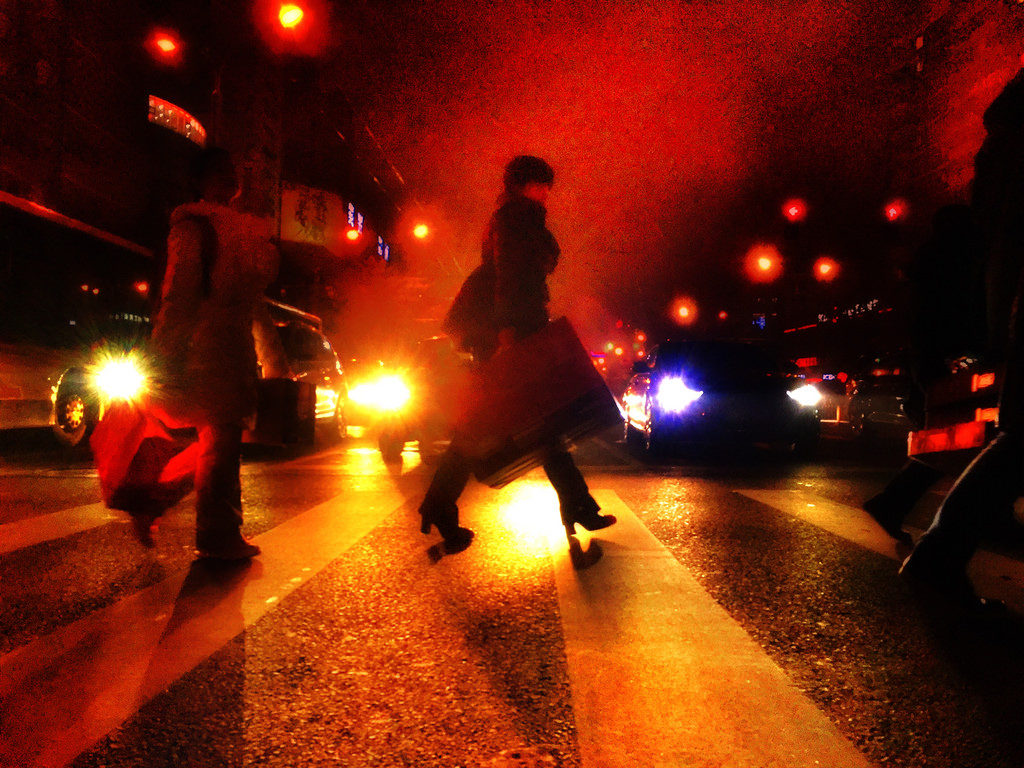
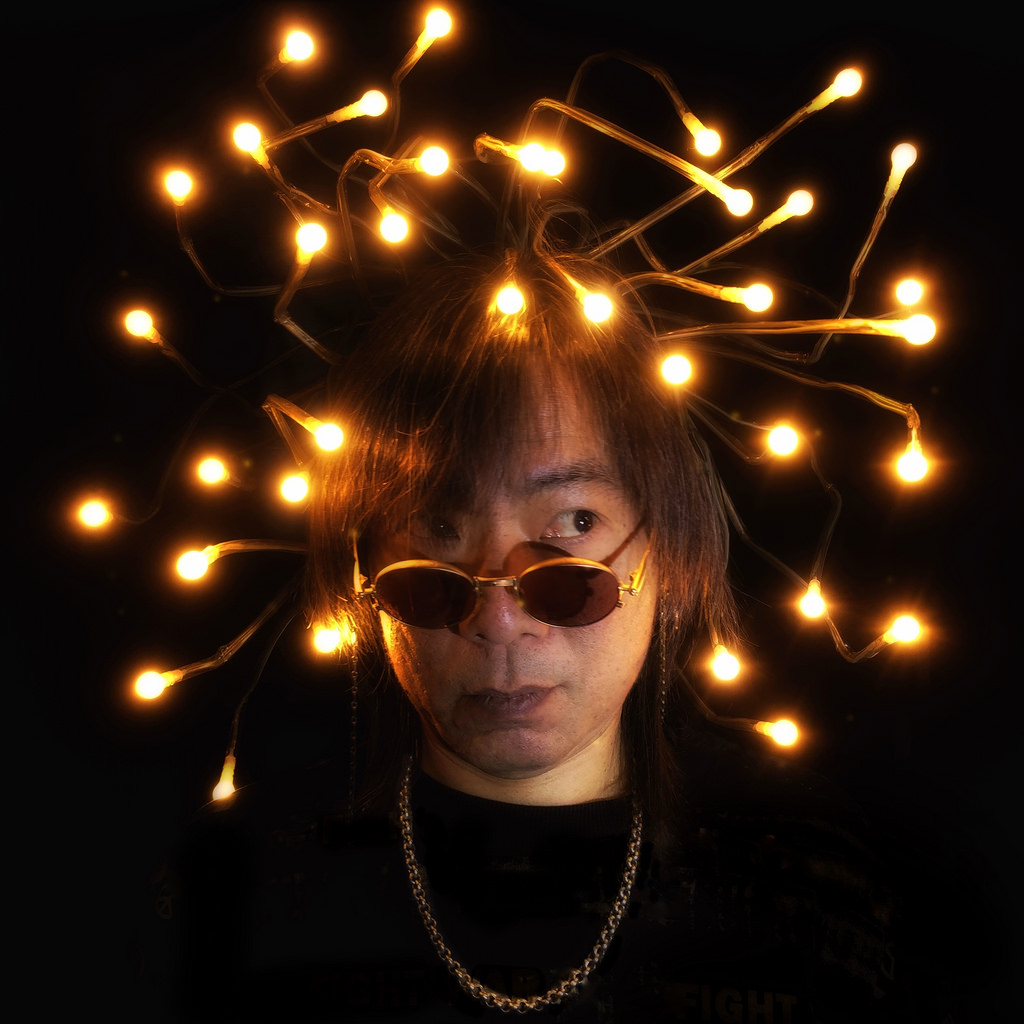





Paul,
I’ve tried using ISO 32 or so before and unless on a tripod, I usually find that the shutter speed gets too slow to make any street photos without blur. What do you do in this case? Increase the ISO or accept the blur? Do you find a less sharp photo better than one with more noise?
Do you generally carry a very small tripod around with you?
I thoroughly enjoyed this interview. Thank you.
Hi Slobiz,
Very glad you enjoyed reading the interview. Yes, I always carry a small tripod with me when I’m out and about. Sometimes I bring along a normal-sized one if I know I’ll shoot night scenes or in very low light situations. However, tripods are a hindrance when capturing fleeting moments, especially in the street. That’s why I recommended the earphone cable between the lips as cable release to avoid vibration produced by pressing the on-screen shutter. Leaning our phone-holding hands on a sturdy object (a tree trunk, lamp post, hand rail, the ground, etc.) helps the overall sharpness a lot too. I would crank up the ISO to no higher than 160 and go for a shutter speed no longer than 1/15 second if the composition calls for freezing motion. You still sometimes get motion blur with that setting and can only hope for the blur to add beauty to the photograph. Better blurry than noisy for yours truly haha!
Thanks for the reply. Much appreciated. I’ve been using a bluetooth remote, but I’m going to try the “mouth-trigger” technique. Good idea.